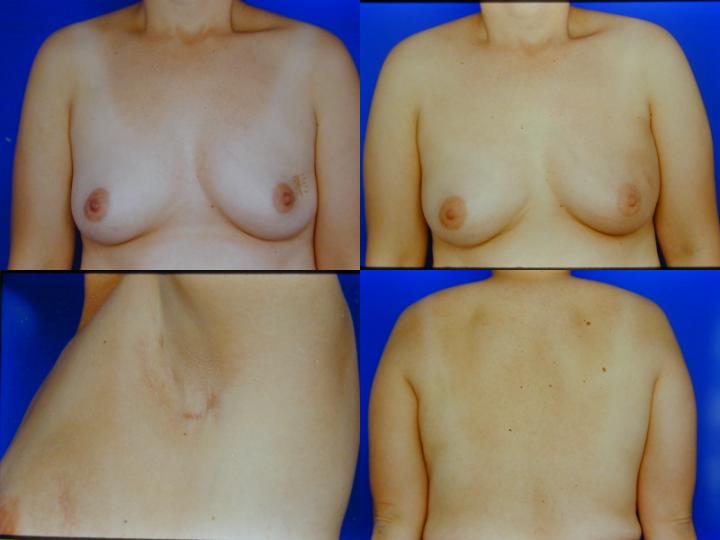Sunday, October 26, 2003 - 2:00 PM
3652
Endoscopic-Assisted Reconstruction with Latissimus Dorsi "EARLi" Treatment of Large Lumpectomy Defects
Introduction: Breast conservation, or lumpectomy is a major component of the treatment of breast cancer. Most patients and many surgeons will preferentially choose breast conserving surgery and radiation as treatment for invasive breast cancer whenever possible. This has lead to the resection of larger and larger tumors, in relation to breast size, effectively pushing the limits of breast conservation. This limit, reached when the resultant defect is no longer cosmetically acceptable, presents a difficult choice to patient and surgeon; e.g. deformed breast or mastectomy. The EARLi procedure gives patients a third choice: reconstruction of the defect during the early treatment period. Immediate reconstruction is a well-established principle in plastic surgery and offers benefits to patients that are both psychological and visible by way of more consistent aesthetic outcomes. Until now there has not been a viable way to connect breast conservation and early reconstruction. If the reconstruction is truly immediate, at the time of lumpectomy, the final pathology may show a positive margin. If delayed reconstruction is performed, the patient will have to have tolerated two years or more of deformity and then will generally require both a scar on the back and a patch-like skin island on the breast to restore the contour of the breast. The use of this technique should result in fewer mastectomies and fewer lumpectomy defects by virtue of early reconstruction of these patients prior to the fibrosis and contraction of radiation. The primary limitation, not having a viable procedure to offer these patients, has been solved with the EARLi technique. Method/Clinical Material: The procedure is divided into two steps: Step 1: Perform lumpectomy with sentinel lymph node if applicable, usually as an outpatient procedure. Step 2: Lymph node dissection, if necessary, and latissimus reconstruction (after final pathology). Typically step two is preformed the week following the lumpectomy, but can be delayed by two or even three weeks. If the margin is clear, but very close, a second excision may also be performed at the time of reconstruction. If the margin is not clear, a second excision procedure is performed and the reconstruction scheduled for the next week, or the patient is converted to mastectomy. Twenty-nine women, age ranged from 37 to 65 years have been treated with this protocol over the past four years. The largest invasive tumor measurement was 5.5 x 5.5 x 2.5cm, positive lymph nodes were seen in 10 patients and pathologic stage ranged from 1-3. All tumors were infiltrating ductal and or lobular, with one case of malignant phyllodes. Results: Reconstruction was completed successfully in all cases. Patients and referring surgeons have graded the results as good to excellent and no secondary procedures have been required. There has been no difficulty with post-operative mammography or physical exam. Complications were minimal, consisting of 4 seromas treated by aspiration in the office and one patient developed a focal area of fat necrosis/scar after radiation requiring core needle biopsy. One patient has gone on to develop cancer in the opposite breast and was treated with breast conservation alone, one patient has had a second primary in the same breast and underwent mastectomy and TRAM flap reconstruction. Conclusions: This method of treatment successfully blends two accepted principles of breast cancer treatment: breast conservation and early (immediate) reconstruction. Patients are able to avoid a scar on their back and were able to pursue breast conservation with excellent cosmetic results, despite large resections. Previous reports of lumpectomy reconstruction have either been delayed, requiring a two-year delay and a scar on the back or have failed to address the need for final pathologic clearance. The EARLi procedure provides an excellent result, is easier to co-ordinate and will allow more women to have successful breast conservation by incorporating early reconstruction.
See more of Breast (Cosmetic and Reconstructive)
Back to Plastic Surgery 2003 Complete Scientific Program
Back to Plastic Surgery 2003 Meeting home

